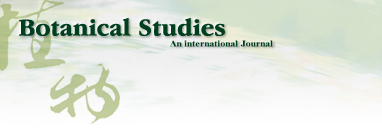 |
|
|
| TITLE | Naturalized Fabaceae (Leguminosae) species in Taiwan: the first approximation |
| AUTHOR | Shan-Huah Wu Section of Evolution and Ecology, University of California at Davis, California 95616, USA Shu-Miaw Chaw Institute of Botany, Academia Sinica, Nankang, Taipei, TAIWAN 11529 Marcel Rejmanek Section of Evolution and Ecology, University of California at Davis, California 95616, USA |
| FULL TEXT | [in HTML format] [in PDF format] |
| ABSTRACT | The family Fabaceae (Leguminosae) is used as a starting point for creating a database of naturalized/invasive plant taxa in Taiwan, a Pacific island with very limited available information on plant invasions. A comprehensive list of naturalized Fabaceae, with background information on origin, habit, life form, and minimum residence time for most of the species is presented. This family is the second largest dicotyledon family in Taiwan, with non-native species accounting for one-sixth of the naturalized flora of this island: 54 naturalized species (approximately 23.8% of resident legume flora, including native and naturalized species) represent 34 genera (eleven exotic to Taiwan) and three subfamilies. Most of the naturalized taxa belong to the subfamily Papilionoideae, and the majority of them are herbaceous perennials with a minimum resident time ³ 60 years. Among these naturalized species, two are listed among the world's worst weeds, and at least six of them are known as important environmental weeds in other parts of the world. Most of the naturalized legumes were introduced from the Neotropics, and a notable portion (at least 50%) of them was introduced deliberately for cultivation as forage or ornamentals. Naturalized legumes often exhibit different rates of spread within similar time frames. For example, Crotalaria zanzibarica is known from approximately 70 localities, while C. bialata is known from only three different localities even though both have the same minimum residence time of 69 years. Such differences suggest that different taxa have a different degree of invasiveness. |
| KEYWORD | Alien flora; Habit; Invasive; Life form; Minimum residence time; Pacific island; |
| ARTICLE INFO | Botanical Bulletin of Academia Sinica, Volume 44 Number 1 January 2003, page 59-66, 8 pages |
| PUBLISHER | Institute of Plant and Microbial Biology, Academia Sinica, Taipei, Taiwan, Republic of China |
